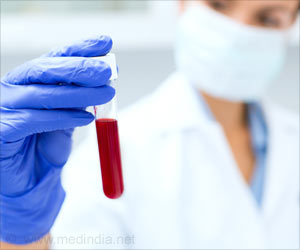Scientist from the Carnegie Mellon University has developed nanogels that facilitate controlled deliverance of carbohydrates drugs.
Scientist from the Carnegie Mellon University has developed nanogels that facilitate controlled deliverance of carbohydrates drugs. The minuscule spherical nanogels-which are only 200 nanometers in diameter- uniformly, release encapsulated carbohydrate-based drugs directly to the target in a time release manner.
The nanogels were developed using atom transfer radical polymerization (ATRP). Daniel Siegwart, a graduate student in University Professor Krzysztof Matyjaszewski’s laboratory at Carnegie Mellon believes the nanogels to be a perfect drug delivery tool. Siegwart will present his research at the 234th national meeting of the American Chemical Society in Boston.ATRP, a controlled living radical polymerization process, allows chemists to precisely regulate the composition and architecture of the polymers they are creating. Siegwart and colleagues used ATRP in inverse miniemulsion to make nanogels with a uniform network of cross-linked polymer chains within a spherical nanoparticle.
“A uniform mesh size within the nanogels should improve the controlled release of the encapsulated drugs,” said Siegwart. “The major advance of this system is that ATRP allows one to prepare nanogels that are uniform in diameter. The size of the particles can be tuned, and we are currently investigating how nanogels of different sizes enter cells.
The results may allow us to better understand the mechanism of endocytosis and to target specific tissues, such as cancer cells that have a more permeable membrane.”
In their most recent advance, the Carnegie Mellon team incorporated the model carbohydrate drug rhodamine isothiocyanate-labeled dextran into the nanogel’s uniform mesh core. When the nanogels degraded, the model carbohydrate drug was released over time. The experiments were carried out with Jung Kwon Oh, a former postdoctoral associate in the Matyjaszewski lab who developed ATRP in inverse miniemulsion.
The new nanogels, which are nontoxic and biodegradable, can also accommodate molecules on their surfaces. During nanogel synthesis, the ATRP process allows scientists to incorporate “targeting groups” on the nanogel surface that can interact with specific receptors, such as those on the surface of a cancer cell. In addition, the nanogels can escape the notice of the body’s immune system, thus prolonging circulation time within the bloodstream.
Advertisement
In a recent article published in the Journal of the American Chemical Society, the Carnegie Mellon team demonstrated that its novel nanogels could be used to encapsulate doxorubicin, an anticancer drug.
Advertisement
Source-Eurekalert
BIN/J








